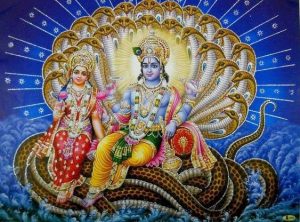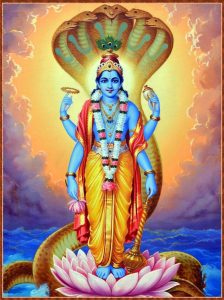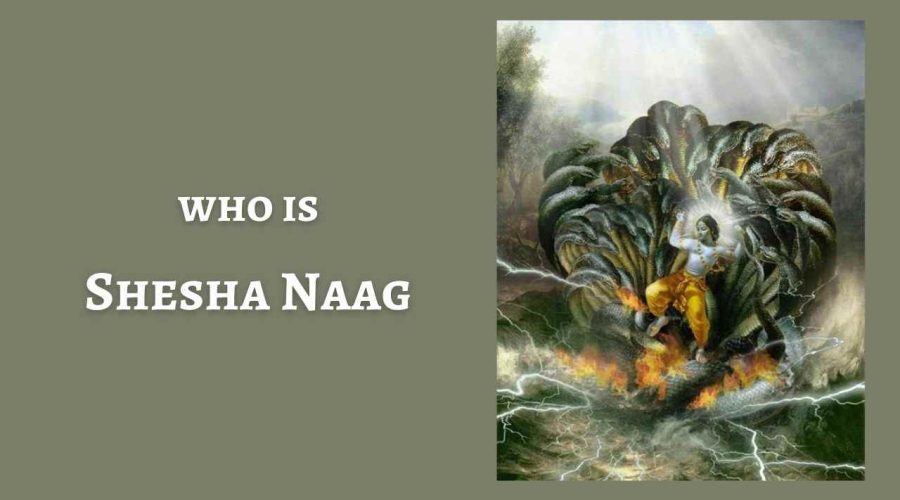All You need to know about “Shesha Naag” (Shesha Snake)
Shesha Naag (also referred to as Adhi-Shesh) is the King of Naga or Serpents. It is also occasionally known as Ananta shesha.
Shesha is derived from the Sanskrit language, where it means “that which remains.” This indicates that Shesha Snake exists even after the end of the world.
Shesha Naag is regarded as the embodiment of consciousness and dedication. Consequently, Adi Shesha is still worshipped and revered in several temples and rituals. Shesha Naag Puja is an important form of “Puja” associated with Shesha Snake and is also known to eliminate Kaal Sarp Dosh from a person’s Kundli if they have it

Typically, Shesha Naag is portrayed as a huge serpent that floats coiled through space. When the Shesha Naag uncoils, time advances and creation occurs, and when he coils back up, the universe ceases to exist.
It is thought that Shesha Naag has five heads and that all the planets in the universe reside in their heads. So it is claimed that each time he moves the Earth from one head to another, an earthquake happens. Essentially, Shesha Naag is attributed to the conception of gravitational force, which assures that all planets and stars rotate around one another.
Story Behind Shesha Naag
Shesha was born as the eldest son of the sage Kashyap and his wife, Kadru, according to the Mahabharata. Many brothers of Shesha were cruel and intent on wreaking damage on others. Shesha left his mother and relatives, disgusted by his brother’s deeds, and began meditating in Gandhamadhana, Badrikashrama, Gokarna, Pushkara, and the Himalayas.
His penances were so severe that his flesh, skin, and muscles withered and fused to his skeleton. Brahma, convinced of Shesha’s dedication, requested that Shesha request a boon. Shesha requested that he be able to maintain mind control to continue performing ascetic penances.
Lord Brahma graciously accepted the plea and asked him to fix the unstable Earth by travelling beneath it. Shesha consented, travelled to the underworld, and stabilised her with his hood. Since then, he is claimed to have made Patala his home and to have resided in its deep levels.

In different depictions of Hindu epics, Shesha Naag is depicted as a massive five-headed serpent with its fangs exposed, standing over the head of Lord Vishnu. On its broad coils, Lord Vishnu is frequently portrayed lying over the ocean.
Hindus worship the Naag as the seat where Lord Vishnu and Goddess Laxmi reside. However, along with Lord Vishnu’s throne, Shesha Naag has also earned a position in Hindu texts as his companion throughout the Four Yugas.
For instance, when Lord Vishnu incarnated as Lord Rama, Shesha Naag incarnated as his brother Lakshmana, and when Lord Vishnu incarnated as Lord Krishna, Shesha Naag incarnated once more as His brother Balarama. Consequently, Shesha Naag is also worshipped as these incarnations. In some instances, Shesha Naag is considered a manifestation of Lord Vishnu.

